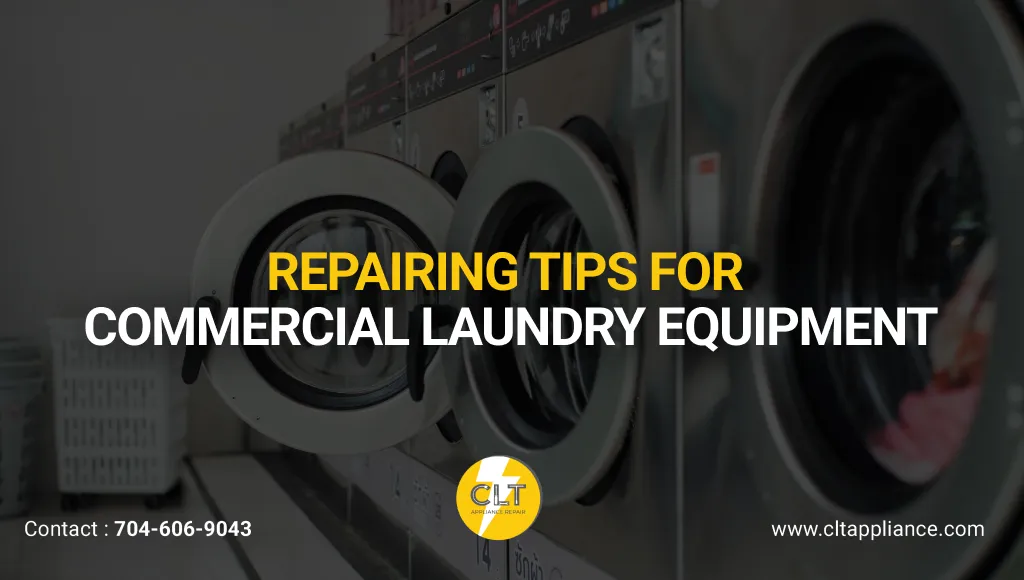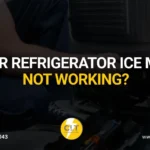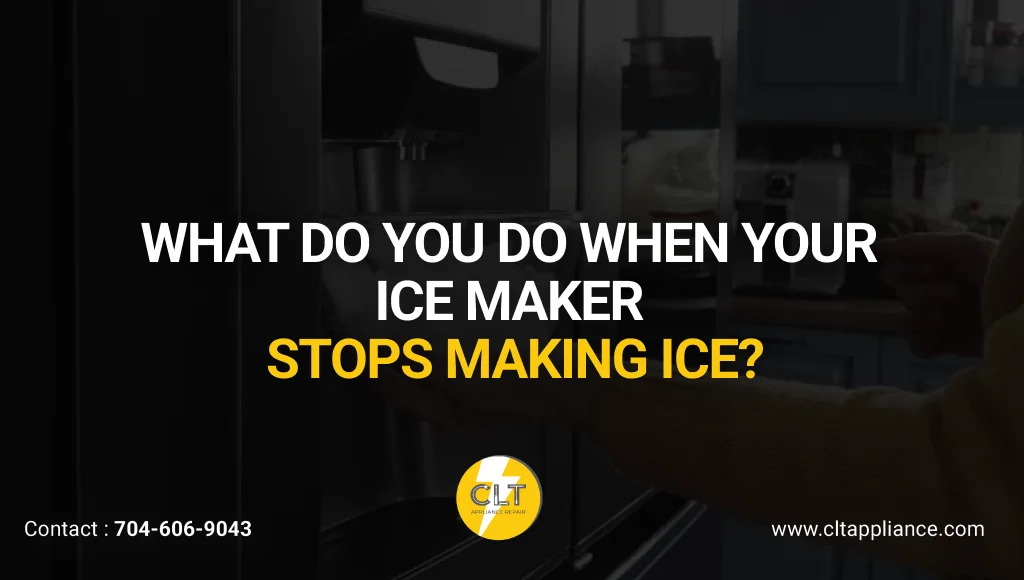[TL;DR]
Commercial Equipment Laundry Repair requires regular maintenance, proper troubleshooting, and knowing when to call professionals. Daily cleaning prevents 80% of common issues. Key maintenance includes checking filters, hoses, belts, and seals weekly. Common problems involve drainage, heating elements, and excessive noise. Professional help is needed for electrical faults, persistent leaks, and control board failures. Essential tools include screwdrivers, multimeters, and spare parts inventory.
Your commercial washer just died during peak hours. Customers are lined up. Your dryer is making that grinding noise again. Sound familiar? Every laundromat owner knows this nightmare. When equipment breaks down, you’re watching customers walk straight to your competition.
Here’s the shocking truth: 80% of equipment failures could have been prevented with simple maintenance tricks. In 2022, commercial washers accounted for 54.8% of coin-operated laundry equipment revenue, making proper maintenance critical for profitability. That broken belt? You could have spotted it last week. The clogged drain? Five minutes of daily cleaning stops it.
Commercial Laundry Equipment Repair doesn’t have to be expensive. Small daily actions prevent big disasters. Smart owners learn these skills, saving thousands while keeping customers happy.
Pro-Tip: Companies can save between 12% and 18% by using preventive maintenance over reactive maintenance, and each dollar spent on preventive maintenance provides substantial returns on investment.
Start with a professional equipment assessment with CLT Appliance Repair to identify potential issues before they become expensive problems.
[Get Free Equipment Assessment: 704-606-9043]
What Equipment Do You Have in Your Commercial Laundry?
Commercial laundry equipment includes washers, dryers, and specialized machines like ironers and extractors. Each machine contains critical components that work together to deliver consistent results.
Commercial laundry machines include washers, dryers, and specialized equipment like ironers and extractors. Each machine contains critical components that work together to deliver consistent results.
Key Components:
- Motors and drive systems
- Water inlet valves and pumps
- Heating elements and thermostats
- Control boards and sensors
- Belts, seals, and gaskets
Equipment manuals contain troubleshooting guides, part diagrams, and maintenance schedules specific to your models. Keep these accessible near each machine for quick reference during repairs.
Essential Tools and Safety Precautions
Basic repair work requires standard tools and safety equipment. Your toolbox should include screwdrivers, pliers, adjustable wrenches, and a multimeter for electrical testing.
Safety First:
- Unplug machines before starting repairs
- Turn off the water and gas supplies
- Wear protective equipment
- Work in well-lit areas
- Never bypass safety switches
Repairing leaking drain valves and hoses can achieve a 3% reduction in water usage, while unplanned downtime costs manufacturers substantial amounts annually, with equipment failure accounting for the majority of all unplanned downtime.
Routine Maintenance to Prevent Repairs
Daily, Weekly, and Monthly Tasks
Daily maintenance prevents 80% of common equipment failures. Clean lint filters, wipe down exteriors and check for unusual sounds or vibrations during operation.
Weekly Tasks:
- Clean water inlet filters
- Inspect hoses for cracks or leaks
- Check soap dispensers and drains
- Test safety switches and door seals
Monthly inspections catch problems before they become expensive repairs. Examine belts for wear, test heating elements, and review maintenance logs for patterns.
Preventive Maintenance Schedule
| Task | Daily | Weekly | Monthly |
| Clean lint filters | ✓ | ||
| Check water filters | ✓ | ||
| Inspect belts/seals | ✓ | ||
| Test heating elements | ✓ | ||
| Review maintenance logs | ✓ |
Regular inspections identify issues early, preventing minor problems from becoming major failures that require expensive Commercial Laundry Equipment Repair services. Professional maintenance staff typically have 4-7 years of experience in cleaning and maintenance departments, highlighting the importance of skilled technicians.
Troubleshooting Common Problems
Washers
Excessive noise or vibration indicates load imbalance, worn bearings, or loose bolts. Check machine leveling first, then inspect internal components for wear.
Drainage Issues:
- Clear blocked drain hoses
- Replace worn door seals
- Test the drain pump operation
- Check water level sensors
Error codes provide specific diagnostic information. Consult your manual for code meanings and recommended actions before calling for service.
Dryers
Clothes not drying properly usually involve airflow restrictions. Clean lint filters, check exhaust vents, and inspect heating elements for proper operation.
Overheating Problems:
- Clean lint from internal components
- Check thermostat calibration
- Inspect the exhaust vent for blockages
- Test temperature sensors
The noisy operation often stems from worn drum bearings, loose belts, or improper machine leveling. Address these issues promptly to prevent further damage.
Professional maintenance contracts provide regular inspections and priority service, helping reduce unexpected breakdowns significantly.
Payment and Control Systems
Coin and bill acceptors require regular cleaning to prevent jams. Use approved cleaning solutions and follow manufacturer procedures for optimal performance.
Software errors may require system resets or professional programming. Document error messages and frequency patterns to help technicians diagnose problems quickly.
When to Call a Professional Technician
Electrical faults, persistent leaks, and control board failures require professional expertise like CLT Appliance Repair. These issues involve safety risks and specialized knowledge beyond basic maintenance.
Signs Requiring Professional Help:
- Repeated error codes after basic troubleshooting
- Electrical burning smells
- Water leaks that return after repair attempts
- Control systems that don’t respond to commands
In 2023, there were approximately 185,000 laundry and dry-cleaning workers in the United States, representing a growing industry. Companies can save significant amounts by using preventive maintenance over reactive maintenance, and each dollar spent on preventive maintenance provides substantial returns on investment.
Stocking Spare Parts and Emergency Preparedness
Essential spare parts include belts, hoses, filters, and common seals. Keep these items on hand to address minor issues without waiting for deliveries.
Emergency Repair Kit:
- Replacement belts for each machine model
- Water inlet filters
- Door seals and gaskets
- Basic electrical components
- Cleaning supplies and lubricants
Proper inventory management reduces downtime and keeps your operation running during minor equipment issues.
Energy-efficient commercial laundry machines can significantly reduce energy consumption compared to older equipment, while ENERGY STAR-certified models use substantially less water than standard models, delivering significant cost savings for your operation.
Staff Training and Best Practices
Train staff to recognize early warning signs like unusual sounds, vibrations, or error messages. Proper loading techniques prevent damage and extend equipment life.
Training Focus Areas:
- Proper loading procedures
- Daily maintenance checks
- Emergency shutdown procedures
- When to call for professional help
Employee awareness prevents many common problems and helps identify issues before they become expensive repairs.
Customer satisfaction depends on equipment reliability. Well-maintained machines deliver consistent results and avoid the service interruptions that frustrate your clients.
Final Call
Effective Commercial Laundry Equipment Repair combines regular maintenance, proper troubleshooting, and professional support when needed. Daily cleaning prevents the most common issues, while weekly and monthly inspections catch problems early. Understanding your equipment’s components and maintaining proper spare parts inventory keeps your operation running smoothly.
Smart business owners balance DIY maintenance with professional expertise to maximize equipment lifespan and minimize costly downtime. Regular care protects your investment and ensures consistent service quality for your customers.
Keep Your Laundry Business Running at Peak Performance
At CLT Appliance Repair, we understand that every minute your commercial laundry equipment is down costs you money. Our certified technicians specialize in all major commercial laundry brands, providing same-day service and preventive maintenance programs that keep your operation profitable. Don’t let equipment failures drain your profits; partner with professionals who understand the urgency of your business needs.
Join hands with CLT Appliance Repair for complete commercial laundry solutions, including repairs, maintenance, and emergency service.
[Schedule Service Today: 704-606-9043]
Frequently Asked Questions
What are the most common problems with commercial laundry machines?
The most common issues include drainage problems, heating element failures, door switch malfunctions, motor issues, control board faults, and worn belts affecting machine performance.
How can I prevent frequent breakdowns in commercial washers and dryers?
Regular maintenance, such as cleaning filters, checking hoses, inspecting belts, and following the manufacturer’s maintenance schedule, helps prevent most breakdowns and extends equipment life.
When should I call a professional technician instead of repairing it myself?
Call a professional if you encounter electrical faults, persistent leaks, control board failures, or if the machine repeatedly breaks down despite basic troubleshooting efforts.
Why is my commercial washer or dryer making excessive noise or vibrating?
Excessive noise or vibration is often caused by load imbalance, worn bearings or belts, or the machine not being level; redistributing loads and inspecting parts helps.
What should I do if my machine is not draining or filling properly?
Check for clogged drain hoses, blocked water inlet filters, or a malfunctioning drain pump; clean or replace these components as needed to restore proper function.
How often should commercial laundry equipment be serviced?
Most experts recommend servicing commercial laundry equipment at least once a year, with more frequent checks for high-use machines to ensure optimal performance and longevity.
Author

- John Bennett
- John Bennett is a seasoned appliance repair specialist at CLT Appliance Repair, where he brings over a decade of technical expertise and a strong commitment to customer satisfaction. With a background in electrical and mechanical systems, John has built a reputation for reliable, efficient, and honest repair services across a wide range of household appliances-including refrigerators, washing machines, ovens, and more.







